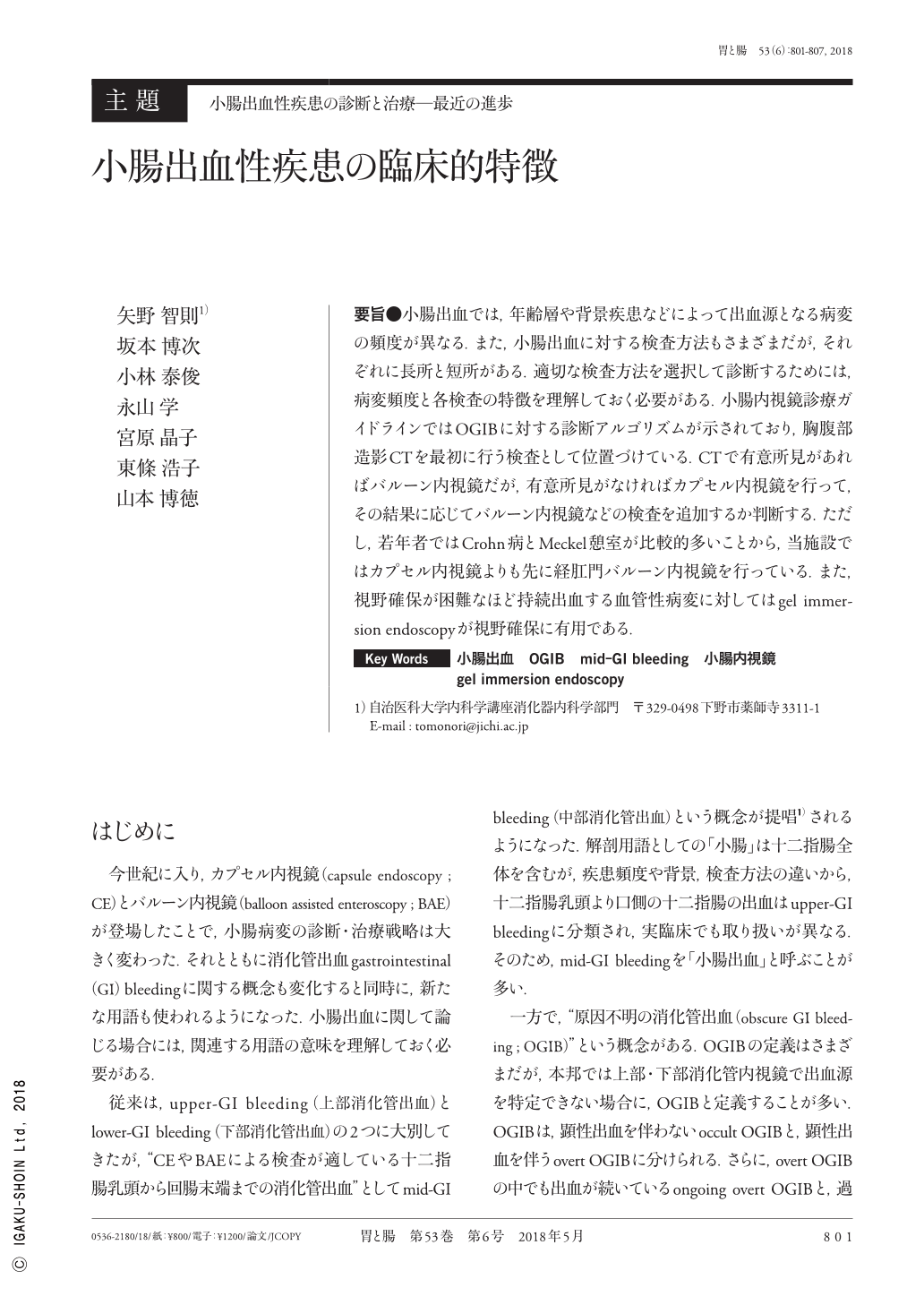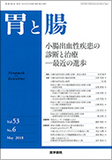Japanese
English
- 有料閲覧
- Abstract 文献概要
- 1ページ目 Look Inside
- 参考文献 Reference
- サイト内被引用 Cited by
要旨●小腸出血では,年齢層や背景疾患などによって出血源となる病変の頻度が異なる.また,小腸出血に対する検査方法もさまざまだが,それぞれに長所と短所がある.適切な検査方法を選択して診断するためには,病変頻度と各検査の特徴を理解しておく必要がある.小腸内視鏡診療ガイドラインではOGIBに対する診断アルゴリズムが示されており,胸腹部造影CTを最初に行う検査として位置づけている.CTで有意所見があればバルーン内視鏡だが,有意所見がなければカプセル内視鏡を行って,その結果に応じてバルーン内視鏡などの検査を追加するか判断する.ただし,若年者ではCrohn病とMeckel憩室が比較的多いことから,当施設ではカプセル内視鏡よりも先に経肛門バルーン内視鏡を行っている.また,視野確保が困難なほど持続出血する血管性病変に対してはgel immersion endoscopyが視野確保に有用である.
The incidence and causal factors of small intestinal bleeding differ according to patients' background, including age and comorbidities. While various modalities can detect the causes of small intestinal bleeding, each test has certain advantages and disadvantages. Thus, the explicit recognition of the incidence of diseases and the characteristics of each modality for selecting the appropriate test is imperative. The clinical practice guideline for enteroscopy has proposed the diagnostic algorithm for OGIB, which positions the thoracoabdominal contrast CT scan as the first diagnostic test. Accordingly, a significant finding in the CT scan should be followed by balloon enteroscopy for further evaluation. On the contrary, capsule enteroscopy should be performed if the CT scan reveals no findings. In this case, however, additional tests, such as balloon-assisted enteroscopy, should be considered on the basis of the results of capsule enteroscopy. However, especially for younger patients, retrograde balloon-assisted enteroscopy could be performed before capsule enteroscopy because Crohn's disease and a Meckel's diverticulum are more prevalent in younger patients. Regarding endoscopic hemostasis, gel immersion endoscopy is advantageous in obtaining and securing the visual field for the ongoing overt bleeding vessels.

Copyright © 2018, Igaku-Shoin Ltd. All rights reserved.


